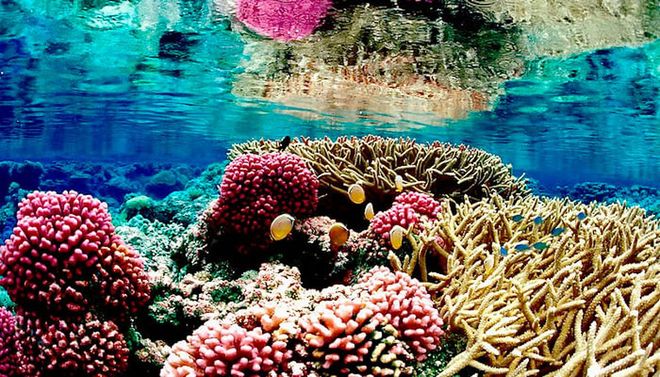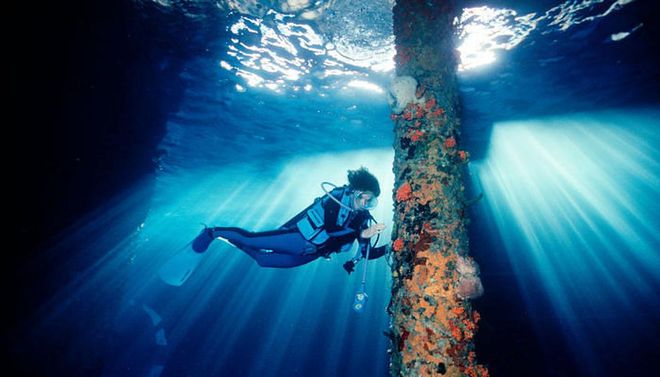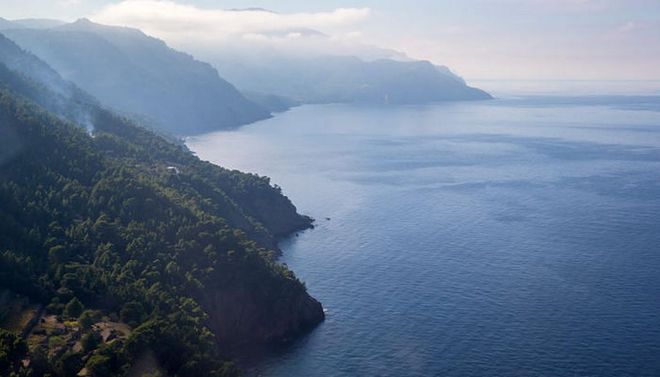Dr. Sylvia Earle's Mission To Save The Oceans
Her inspiring message of hope, awareness and action is a timely reminder for Earth Day


Rolex Testimonee and honoured oceanographer, Dr. Sylvia Earle
Rolex Testimonee Sylvia Earle
Dr. Sylvia Earle was named Time Magazine’s first-ever Hero for the Planet in 1998 and has been a National Geographic explorer-in-residence since then as well. More impressively, she is the U.S. National Oceanic and Atmospheric Administration’s first Chief Scientist, a pioneer in the development of deep sea submersibles and has over a hundred American and international accolades to her name.
She is a marine biologist oceanographer, explorer, author and lecturer with invaluable experience in marine protection and preservation. And, by the looks of it, this octogenarian has no plans of slowing down. President and Chairman of – which aims to improve ocean health through public awareness and the support of protected marine areas called Hope Spots – Earle speaks to us about the importance of hope, awareness and the knowledge that everyone can make a difference.

Palmyra Atoll National Wildlife Refuge. Photo: Jim Maragos, U.S. Fish and Wildlife Service
Palmyra Atoll National Wildlife Refuge
Tell us more about Mission Blue and Hope Spots.
I was motivated to start Mission Blue to basically find a home for the concept of Hope Spots – a network of Marine Protected Areas around the world that are of vital importance to the health of the ocean, the blue heart of the planet. I initiated the non-profit organization [in April 2010] after I won the TED prize in 2009, building on a relationship that I had developed with Google to bring the ocean into Google Earth. I began working with National Geographic, working with Google, working with the companies that I started – Deep Ocean Exploration and Research (DOER, 1992) – and with people all over the world to try to elevate the whole concern about protecting nature.
The idea for Mission Blue is for further exploration, so that we can know better. That requires technology to explore and define the nature of what’s there, to share the view as widely as possible, not just with scientists, but with the public at large. And it requires inspiring people to take action and say, “this is part of the ocean, I care about. I want to make it a Hope Spot and I am willing to make a pledge to those I can inspire with me to take care of the place.” A Hope Spot can be a place that is in good condition or one that has been damaged over time but, with care, can be restored. The Galapagos is one example of a Hope Spot. Chesapeake Bay is another. It’s in Washington, D.C.’s backyard, and it has been trashed.
Your illustrious career spans over five decades and it looks like you have no plans of slowing down. What drives you?
This is a moment in time as never before; when we realize the Earth is in trouble. Since I began exploring the ocean in the 1950s, I have been driven by a sense of urgency about what I can do as a scientist, as a human being, to say I can make a difference. To go from consuming the natural world, to saying: Enough already. There is plenty reason for hope. It starts with people understanding that we have impacts on the ocean and knowing why it matters.
People say I’m an activist. But I think of myself as a scientist: I explore and inform. And what I can do best is continue doing what I’ve always done – look at the evidence. I am still a botanist, an ecologist, and an explorer. I dive somewhere usually once a month. I have to keep my gills. Everyone can do something. Not everyone can do everything, but everyone can do something to make a difference.

Dr. Sylvia Earle, photographed by fellow Testimonee David Doubilet.
Dr. Sylvia Earle
Tell us about your partnership with Rolex.
I’ve had fun over the years of working with Rolex, a really unusual entity that respects exploration, respects education, respects the natural world, and has a way of getting behind individuals who can carry the message armed with the means of measuring what’s going on. Rolex is an icon of time and it does what every company, every country, and every one of us should be doing: Trying to make the world a better place. Rolex supports this movement through supporting exploration and education. They do it because it’s their responsibility.
How does Rolex support you as an explorer and your organization Mission Blue?
I’ve been a Rolex Testimonee since 1982 and my connection to Rolex goes back to 1970 when Rolex equipped the Tektite II expedition [of which Earle was a leader]. Since 2014, Rolex has become a supporter of Mission Blue, helping us with expeditions and our outreach, which is another dimension of our relationship.
Today there are 112 Hope Spots worldwide – an increase from 50 over the past four years – and Mission Blue collaborates with over 230 international partners, including Rolex, National Geographic and the International Union for Conservation (IUCN), as well as small scientific teams.

Dr. Sylvia Earle’s Mission Blue created its first “Hope Spot” to protect marine biodiversity in the Balearic Islands, Spain
Mission Blue created its first Hope Spot to protect marine biodiversity in The Balearic Islands, Spain
What are you most appreciative about the Rolex Perpetual Planet initative and your partnership with the organisation?
Our interests have become increasingly aligned. Like Rolex, I feel that the time has come to make a stand for a Perpetual Planet so that the marvels of the ocean in all its teeming diversity are not lost to future generations. Through Mission Blue my goal is to protect 30 per cent of the oceans by 2030 [currently only eight percent of the oceans are protected]. Rolex is assisting us as part of its commitment to join forces with organizations which are trying to find solutions to the challenges the planet is facing. Together we can make a difference.
What is one thing you know now that you wish you knew when you were younger?
I think everyone must follow their own path, one way or another. Sometimes that path means you follow the well-trodden ones – some people are just more comfortable going where others have been. I love going where no one has been before. I have never stopped asking questions. I think most scientists continue doing just that; it’s in their backbone. That is what has led me to want to know what’s over the next hill or what’s around the next bend or what’s under the ocean. There are always questions that need to be answered, places that no one has been to yet – especially in the ocean.
Related articles:
The Future Is Female, According to Rolex
How Rolex Is Saving The World With National Geographic
37 Inspiring Women Who Shaped Feminism